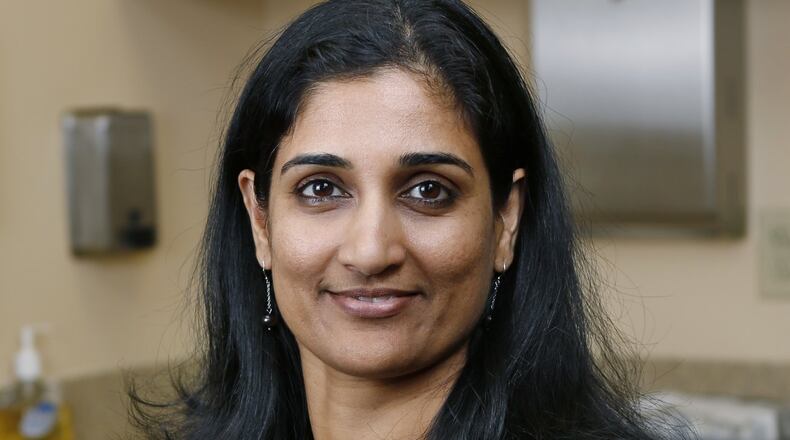“In general, we know that a cancer cell was once a normal cell before it mutated and became cancerous. Since then, it has taken on a new identity,” said Dr. Tarek Sabagh, a medical oncologist with Premier Health. “Immunotherapy is used to help your immune system detect this new identity to be able to fight it since it doesn’t belong there.”
FIVE FAST READS
• Local mall announces new store coming two days in a row
• New store to open at Beavercreek mall
• Amazon boosts wages for area Whole Foods, Amazon workers
• New store opening in former Fairborn Kroger space
• New Centerville arts, crafts store announces opening date, giveaways
Immunotherapy has been used effectively to treat cancers of the lung, skin and kidney, so it made sense for doctors to begin exploring the possibilities that might exist in the field of breast cancer. However, not every form of breast cancer is created equal. Each has its own unique hormonal make-up and genetic signature, ruling out a “one-size-fits-all” treatment approach.
“One of the biggest challenges we’ve faced is determining which sub-group of breast cancers will get the most benefit from immunotherapy,” said Sabagh, who also is an MD Anderson-certified physician. “Breast cancer is heterogeneous, which means if there are a number of hormonal influences, it can be tough to find a single treatment that applies to each type.”
Over time, however, research began to show that immunotherapy was most effective in the treatment of breast cancers that have been identified as “triple-negative.” Triple-negative describes cancer cells that have tested negative for estrogen receptors (ER-), progesterone receptors (PR-), and HER2 (HER2-).
Immunotherapy is most effective when there is an increased presence of tumor infiltrating lymphocytes (TIL) present to attack a cancer. Lymphocytes are white blood cells that the body’s immune system uses to help fight off disease.
“When you look at breast cancer, the tumor that has more of those lymphocytes in it, the better the prognosis and outcome,” said Sabagh. “Researchers continue to look for ways to stimulate the immune system to get more of those TILs to a tumor. These are more commonly found to be present in triple-negative breast cancers, which is one of the reasons that immunotherapy is beneficial for those patients.”
However, Sabagh said that a higher number of TILs does not always produce a better outcome. Consequently, researchers have focused their energy on learning more about the inner workings of cancer cells in what is known as a “tumor micro-environment.”
“By studying this micro-environment, we can hope to get a better understanding of what might be inhibiting the TILs from reaching their full effectiveness,” said Sabagh.
Doctors are looking at other factors, such as limiting the growth of blood vessels around a tumor to increase the effectiveness of immunotherapy treatment. And they are examining the potential uses of various chemotherapies in combination with immunotherapy.
Though immunotherapy is limited to a specific subset of breast cancer types, ongoing research has Sabagh and others optimistic about the future of the treatment.
“Though it’s somewhat limited right now, I really think it’s just a matter of time before we will have a greater number of FDA-approved immunotherapy drugs for the treatment of different breast cancers,” he said.
About the Author
